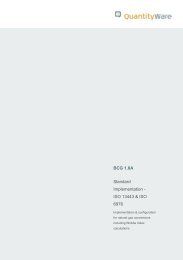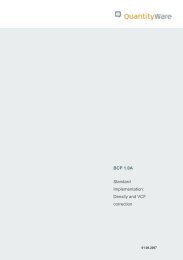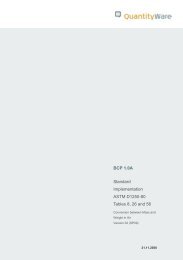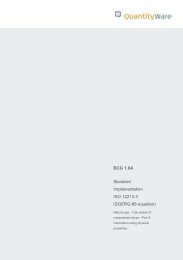QuantityWare - ASTM D1250-04_ASTM_D1250-80 comparison
QuantityWare - ASTM D1250-04_ASTM_D1250-80 comparison
QuantityWare - ASTM D1250-04_ASTM_D1250-80 comparison
- No tags were found...
Create successful ePaper yourself
Turn your PDF publications into a flip-book with our unique Google optimized e-Paper software.
performed, which are based on a model derived from experimental data taken withIPTS-68, standard densities are also adjusted accordingly.The accepted value of the standard density of water at 60 °F has changed slightly fromthe value of 999,012 kg/m 3 - used in the <strong>ASTM</strong> <strong>D1250</strong>-<strong>80</strong> standard implementationprocedures - to 999,016 kg/m 3 . This affects the conversion of density values withrelative density and API gravity. The impact of this change can be seen in Tables 5, 6,23, and 24. The (absolute) density calculations are not affected by this change.In 1988 the IP produced implementation procedures for 20 °C (Tables 59 A, B and Dand 60 A, B and D) by extending the procedures used for the 15 °C Tables. This was inresponse to the needs of countries that use 20 °C as their standard temperature. Thecalculation based on 20 °C is now included in <strong>ASTM</strong> <strong>D1250</strong>-<strong>04</strong>.Tables for lubricating oils were developed and approved as part the <strong>ASTM</strong> <strong>D1250</strong>, butwere never fully documented. The implementation procedures are now incorporated in<strong>ASTM</strong> <strong>D1250</strong>-<strong>04</strong>.Rounding of density values in metric tables changed from 0.5 kg/m³ to 0.1 kg/m³, toimprove discrimination and harmonize with various national standards referring to<strong>ASTM</strong> <strong>D1250</strong>, e.g. DIN 51757.The temperature and density ranges have now been extended to lower temperaturesand higher densities (i.e., lower API gravities) and the gaps still present in <strong>ASTM</strong><strong>D1250</strong>-<strong>80</strong> have been removed.Real-time density measurement using density meters has become more commonlyused for input into VCF calculations; the usage of such devices results in higherpressures at the point of measurement. This pressure effect must be taken into accountsimultaneously with temperature effects. Pressure and temperature corrections havebeen combined into one procedure.The term VCF has been replaced with the term CTPL (Correction for Temperature andPressure of a Liquid), the temperature portion now being called CTL.Comparison of <strong>ASTM</strong> <strong>D1250</strong>-<strong>04</strong> and <strong>ASTM</strong> <strong>D1250</strong>-<strong>80</strong> 12/49



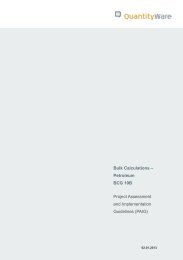
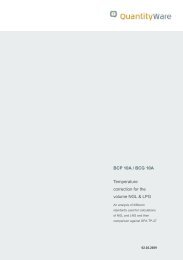

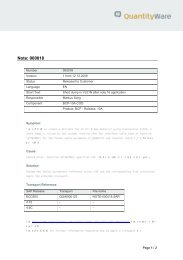
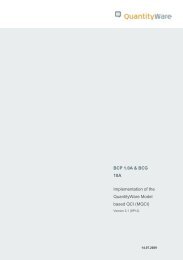
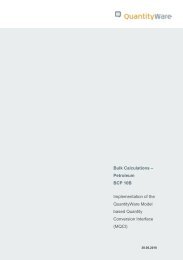
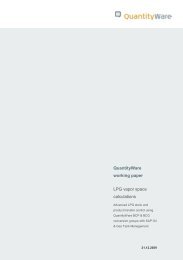
![Petroleum ASTM D1250-80 SP09 [276.9 KByte] - QuantityWare](https://img.yumpu.com/48083876/1/184x260/petroleum-astm-d1250-80-sp09-2769-kbyte-quantityware.jpg?quality=85)
![SAP QCI in a Nutshell + Notes [761.4 KByte] - QuantityWare](https://img.yumpu.com/46691308/1/178x260/sap-qci-in-a-nutshell-notes-7614-kbyte-quantityware.jpg?quality=85)
